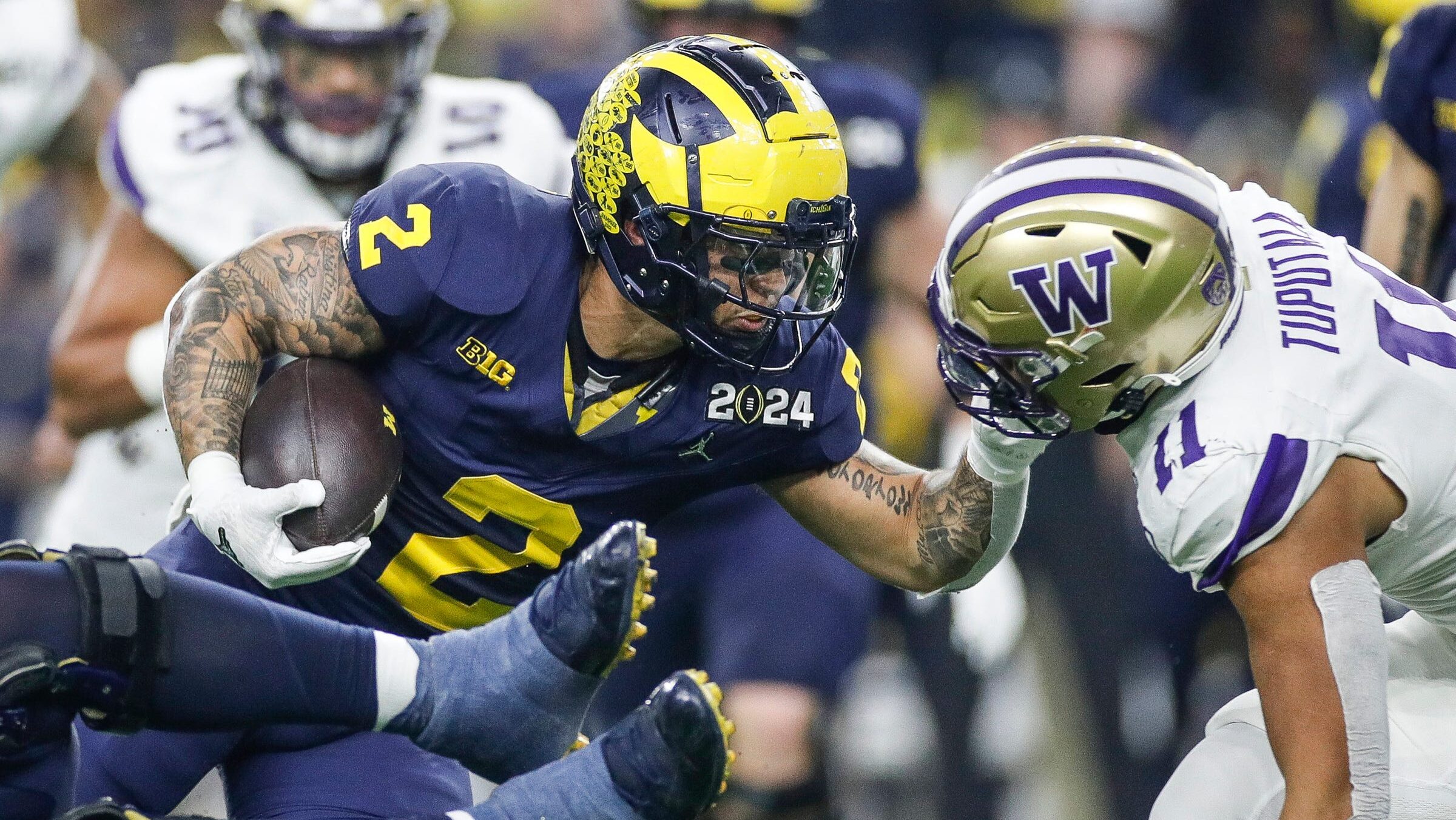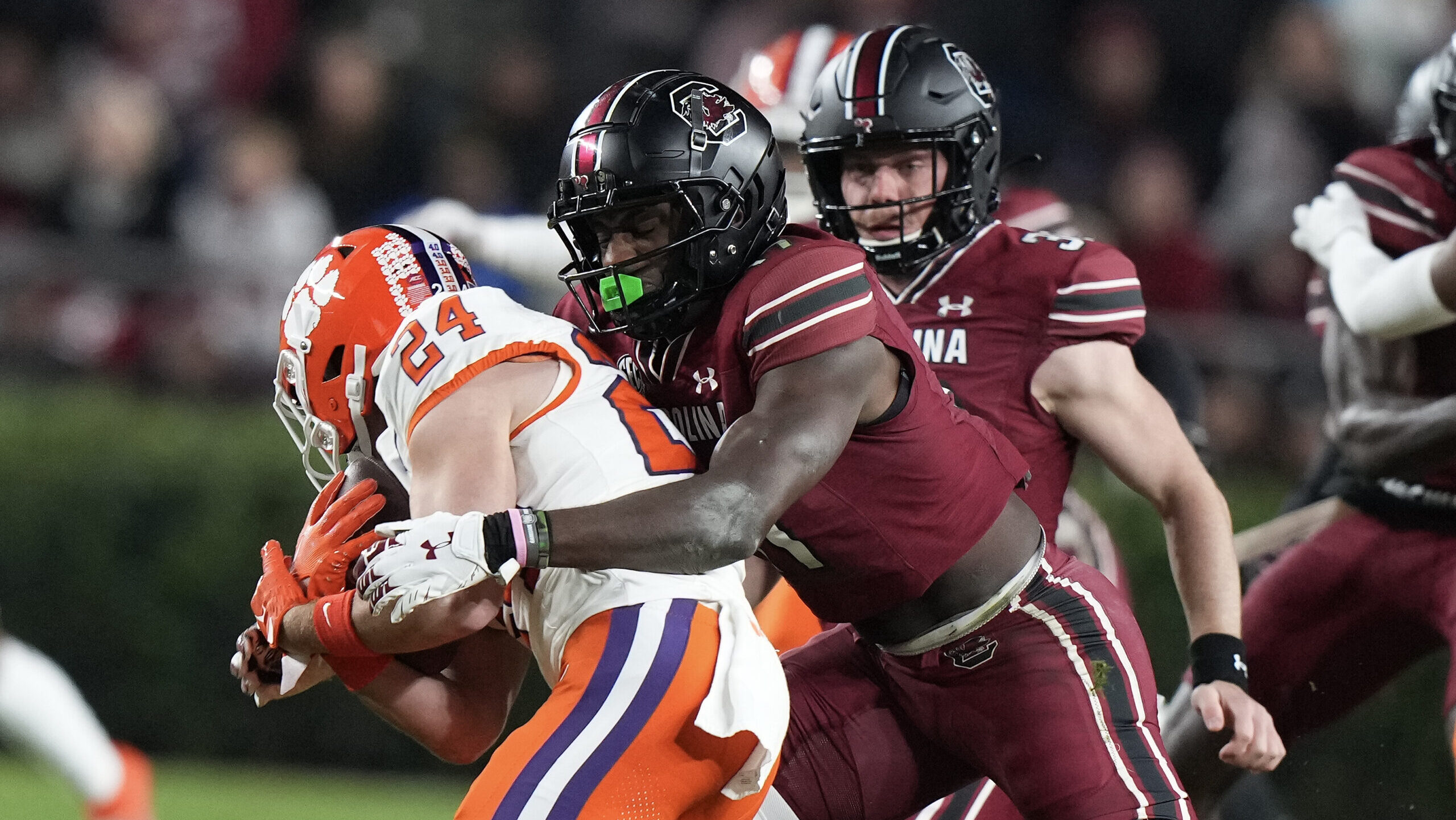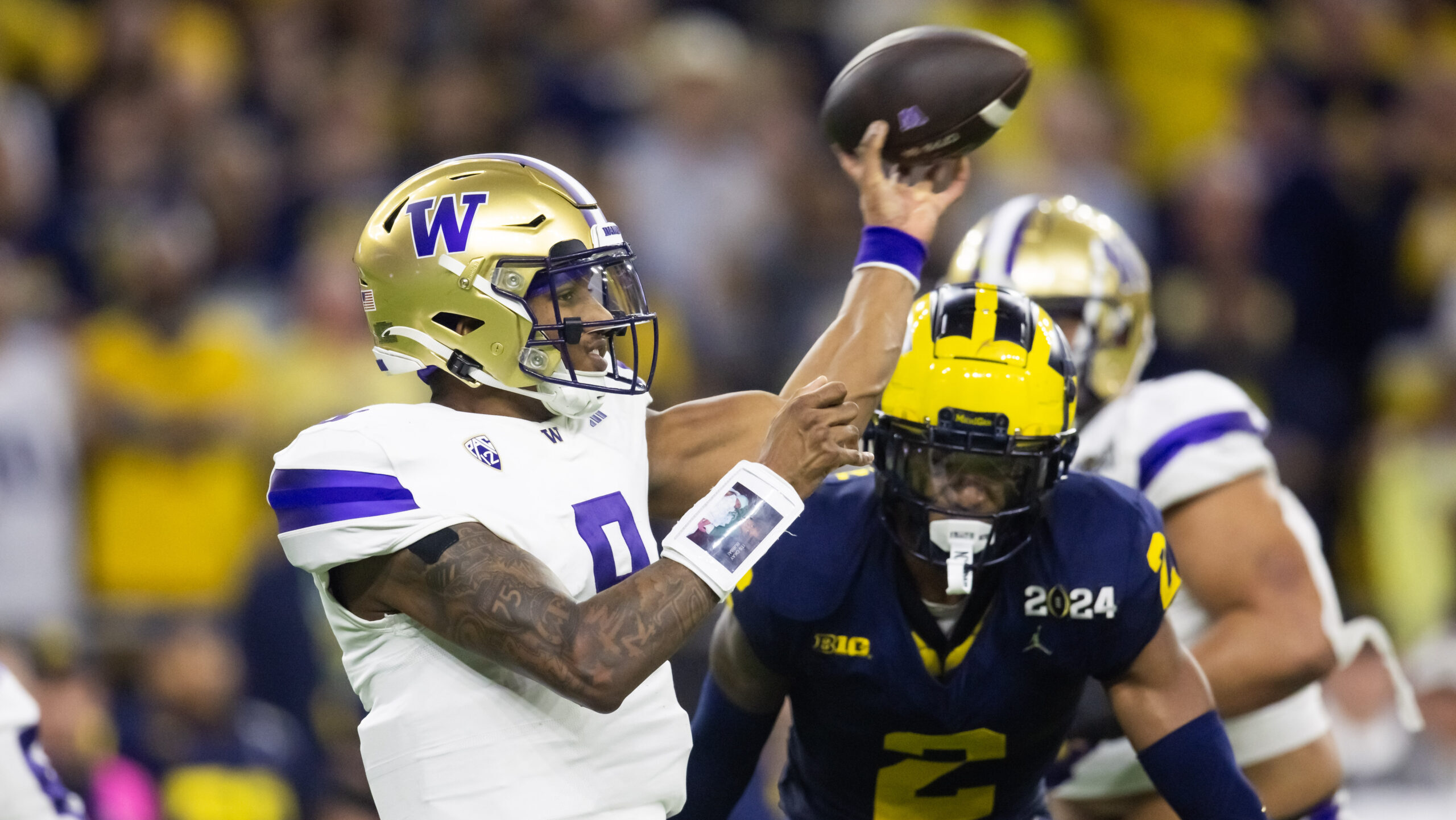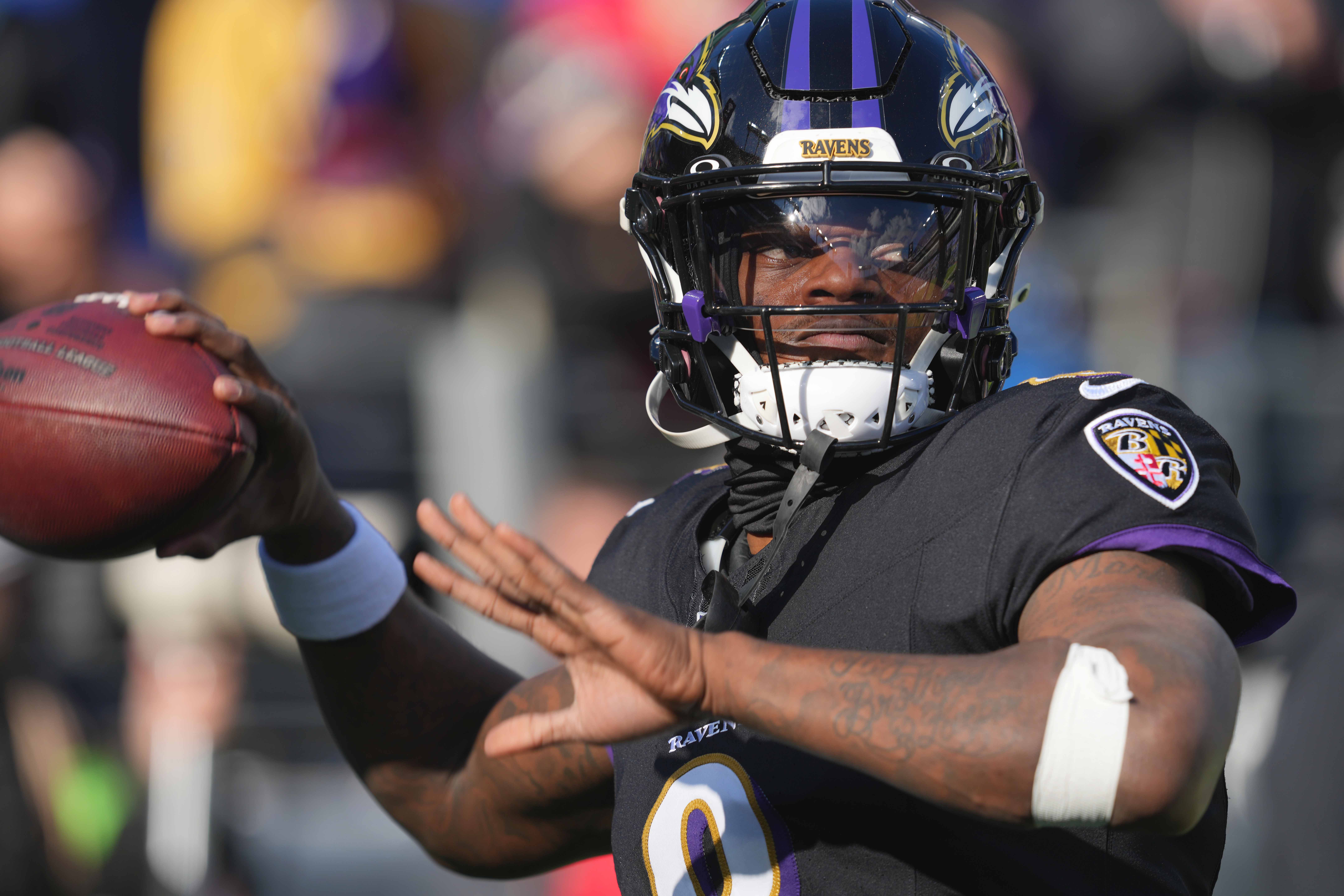Analysis
12/22/22
8 min read
Dynasty Stock Report for NFL Week 16 Fantasy Football
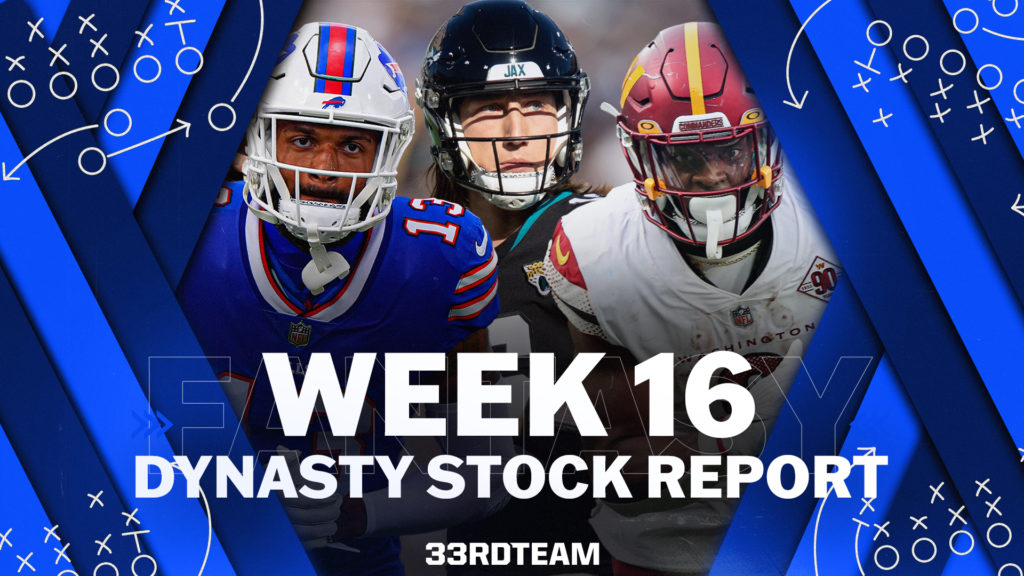
Welcome to the dynasty stock report, where we evaluate polarizing players to see whether their stock rises or falls. In fantasy football, we’re dealing with small samples, where any situation can change in the following year. Each league is different, and each manager values their players differently.
The goal of these dynasty stock articles is to use the recent or season-long data as a guide on how to value players. Should we buy, sell or hold these players? How do these players compare historically? Let’s dive into three players seeing their dynasty stock rise or fall in 2022. Feel free to reach out if you have a suggested player to analyze.
Dynasty Stock Up
Brian Robinson, RB, Washington
Age: 23.7
Brian Robinson missed the first four weeks of his rookie season after suffering a gunshot wound to his leg. When he returned, Robinson barely factored into the receiving game though he established himself as an early down grinder. As an older back at 22.7 years old when entering the league, he posted a 63% backfield Dominator Rating (the percentage of production from a specific position on a team) with more than 1,300 yards rushing and 14 touchdowns in his final college season.

Robinson compared similarly to his former Alabama teammate, Damien Harris. However, Harris never had a peak season like Robinson, with Najee Harris, Bo Scarbrough, Josh Jacobs, and Jalen Hurts sharing rushing production. At 225 pounds, Robinson ran a 4.53 40-yard dash, translating into a 78th-percentile Speed Score. Antonio Gibson regularly competed with J.D. McKissic for receiving opportunities, and now Robinson has eaten into the overall backfield usage.
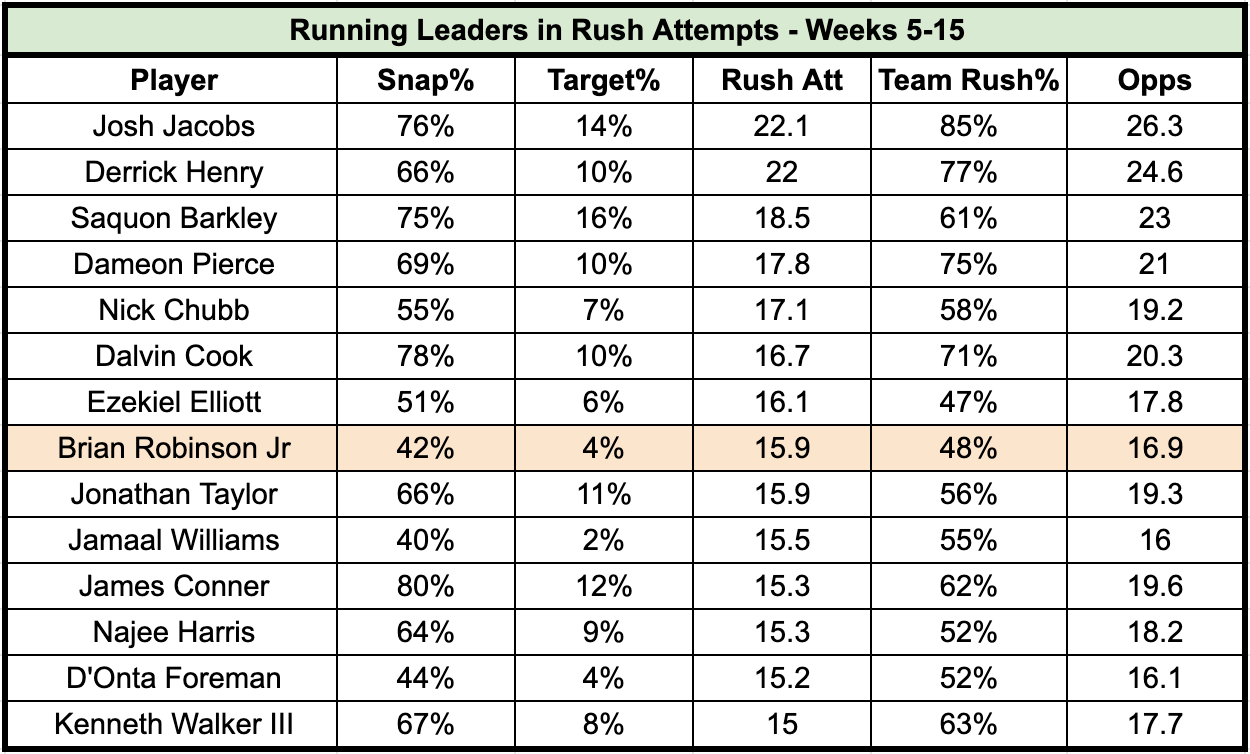
Since Week 5, Robinson ranks eighth in carries per game (15.9) but, unfortunately, averages a measly 4% target share. Meanwhile, Gibson boasts the seventh-highest target share with the second-fewest carries per game at 9.1 behind D'Andre Swift amongst the RB target leaders. Robinson has middling underlying metrics with 2.4 yards after contact (No. 46) and 12.6% (No. 48) amongst backs with 25 rush attempts.
At first glance, without looking at historical comparisons, Robinson falls into a similar bucket as Raheem Mostert, Isiah Pacheco, and Gus Edwards. With those backs, their redraft and dynasty stock hinges on rushing production with little receiving opportunities. They may add receiving value, but it's less probable, given the backfield committees.
Historical Comparisons & How To Play It?
It's a mixed bag of historical rookie comparisons in their rookie year for Robinson since 2010. That includes Terrance West, Alfred Blue, Tyler Allgeier, and Sony Michel based on the rushing/receiving Expected Points (EP), age, and weight. West peaked in Year 1, Blue profiled as a career backup, and Michel posted RB3 seasons three times. Michel might be the best-case scenario where he posts RB1 performances 12% of the time when given the opportunity.
Gibson is under contract through 2023 and an unrestricted free agent in 2024, with McKissic in a similar situation. We know running back value and their dynasty stock are fickle, so it's challenging to be confident in Robinson's role in 2023 and beyond. Based on the current data, Robinson will need to rely on his rushing production to maintain value unless he adds a receiving element. Look to move Robinson in the offseason because his dynasty stock concerns us.
Trevor Lawrence, QB, Jacksonville
Age: 23.2
After Trevor Lawrence's rookie year, he looked like a bust. However, one could blame the coaching staff and the offensive environment around him. Lawrence averaged 6.05 yards per attempt (No. 31) with 12 passing touchdowns and 17 interceptions in Year 1. Through 14 games in Year 2, Lawrence averages 7.04 yards per attempt (No. 18), with an improved touchdown to interception ratio (24:7).

Lawrence also adds a rushing element with the seventh-most carries and eighth-most yards rushing since 2021 amongst qualified quarterbacks. He improved his passing efficiency with a 4.5 adjusted YPA (No. 33) and 74.4% On-Target% (No. 28) in Year 1. That improved in Year 2, with 6.7 air yards per attempt (AY/A) (No. 10) and a 78.5% On-Target% (No. 11). It helps that he received an upgrade with the offensive weapons. During Lawrence's rookie season, the options included James Robinson and Carlos Hyde as the leader rushers and Laviska Shenault and Marvin Jones as the target leaders. With Travis Etienne healthy, the Jaguars added Christian Kirk, Zay Jones, and Evan Engram in Lawrence's sophomore season.
Historical Comparison & How To Play It?
Through Lawrence's first two years in the league, he compares similarly to Blake Bortles, Daniel Jones, Tua Tagovailoa, and Andrew Luck. Matthew Stafford, Luck, Bortles, and Lawrence averaged at least 17 passing EP/G, with only Stafford under two rushing EP/G. Bortles ranked QB4 in Year 1, then QB10 and QB13 in the following two seasons, with an average of 355 yards rushing in his first five years. Luck would probably be a ceiling outcome with QB5 or better in four out of six seasons, with a QB10 performance in Year 1. Meanwhile, Stafford lacked the rushing floor that Luck and Bortles provided, though he relied on passing efficiency and volume.
In Superflex leagues, Lawrence's dynasty stock improved in Year 2 to push him into the middle of the first round of start-up drafts. It might be reactionary based on the injuries and struggles, but Lawrence should be valued slightly higher than Lamar Jackson. Consider moving Jackson for Lawrence, if possible, or a first-round rookie pick, plus a player on a rebuilding squad. Based on Lawrence's improvements as a passer and a rusher, he should be in the backend of the elite or high-end tier of quarterbacks for the next several seasons.
Dynasty Stock Down
Gabe Davis, WR, Buffalo
Age: 23.7
The talk of the offseason on Twitter included a lot of Gabe Davis. One argument for a breakout season in 2022 involved a projected increase in targets and routes paired with Josh Allen. With Stefon Diggs as the Bills' target hog with the sixth-highest target share (28.7%), Davis ranked as WR60 in target share (15.6%). Davis averaged 40.3 routes per game (No. 6), nearly double his 21.1 (No. 103) in 2021. Per TruMedia, Davis has the highest air yards per target at 15.12, making those high-value targets deep and down the field. Unfortunately, that typically leads to less convertible opportunities, meaning a volatile profile.
In one of my first articles on the site, I mentioned my intrigue for Tyler Lockett and how he had the potential to outproduce Davis. While it seemed like an unlikely outcome in the preseason, Lockett ranks as WR8 in PPR and Davis at WR35. Lockett ranks 24th in EP/G and 10th in fantasy points over expected per game (FPOE/g), versus Davis at No. 50 in EP/G and No. 23 in FPOE/G. Davis has produced efficiently in FPOE/G, but a 0.65 Receiver Air Yard Conversion Rate (No. 80) indicates he hasn't converted his air yards into receiving production.
Davis's Air Yards Role
Before Allen's elbow injury, Davis's air yards per target sat at 17.05 in Weeks 1-9, which dropped slightly to 13.23 (No. 14) in Weeks 10-15. Davis remains a boom/bust option with one WR1 and two WR2 finishes in the first nine weeks of the season, with one WR1 performance over the last six weeks.
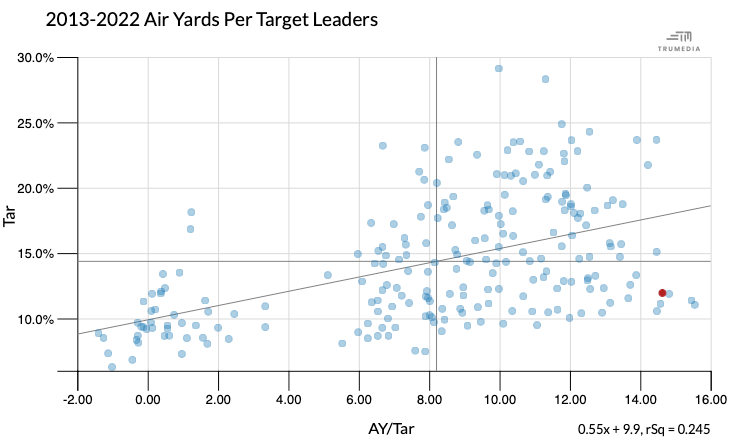
Several other underlying metrics for Davis look concerning, with 1.5 yards per route run (No. 63) and 0.45 weighted targets per route run (No. 97) amongst receivers with a minimum of 100 routes. We looked at the weighted total yard per route run (TPRR) since it considers air yards, but even Davis's 15% TPRR (No. 125) raises concern.
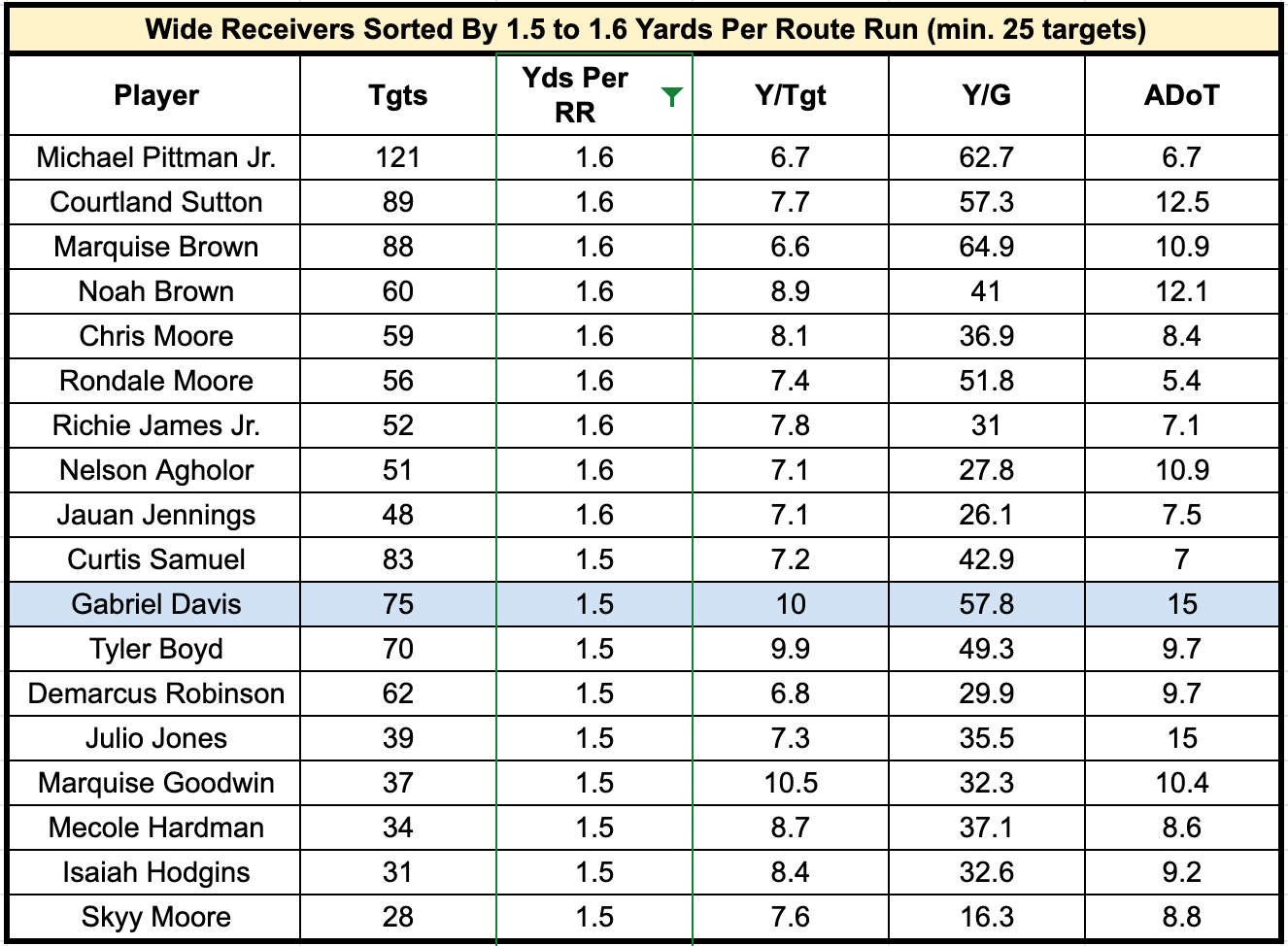
A few receivers with a TPRR below 20% and a similar YPRR include Noah Brown, Tyler Boyd, Alec Pierce, Adam Thielen, and Marquez Valdes-Scantling. Davis's preseason and current dynasty stock likely don't align with the market values for those receivers. With that, let's look at the closest comparisons.
Historical Comparisons & How To Play It?
The top receiver comparisons based on receiving EP and FPOE/G, draft capital, and age include Donovan Peoples-Jones, Kenny Stills, and Chris Godwin. Godwin might be the ceiling outcome since he finished as the No. 2 overall WR in Year 3, with a borderline WR1 season in 2021 and ranked 14th. Stills seems like an interesting comparison since he averaged the third-highest AY/T at 14.57 behind DeSean Jackson and John Brown from 2013 to 2021. With Peoples-Jones, it's considering his current season as WR33, with his best season so far in Year 3, averaging 12.3 PPR/G in 12 of his 14 games.
Given the preseason hype and projection, Davis's dynasty stock fell and presents a buy-low opportunity. Even if Davis follows the path of Stills or the relative consistency of Peoples-Jones in Year 3, that would be a probable outcome. In 2022, Peoples-Jones has eight games with 60 or more yards receiving, joining 14 other receivers, with Travis Kelce as the only non-WR. Davis is still a top-100 player in dynasty formats. Hold if you roster him, and buy low if you believe in the projection as a WR3 with WR2 upside. He'll be an unrestricted free agent in 2024, so keep an eye on whether the Bills extend him.
WATCH: 1-on-1 With Cameron Dicker

